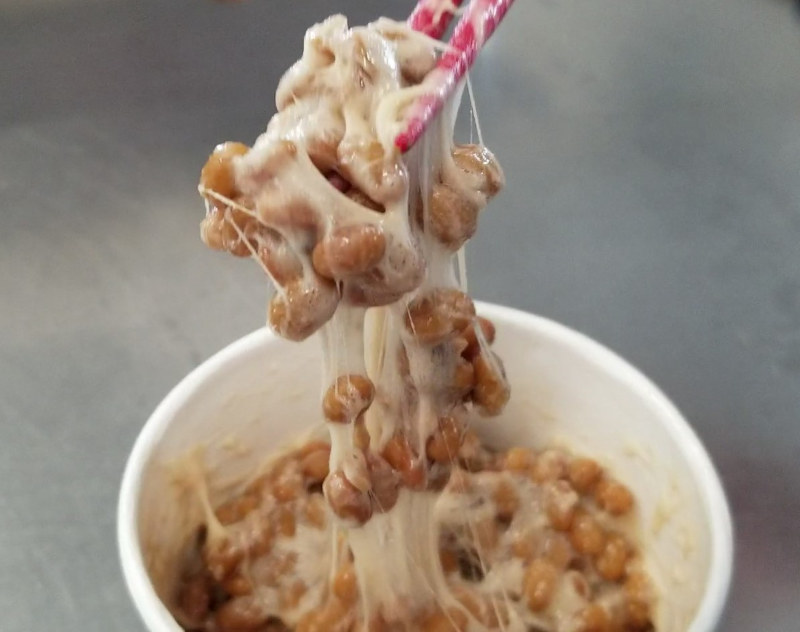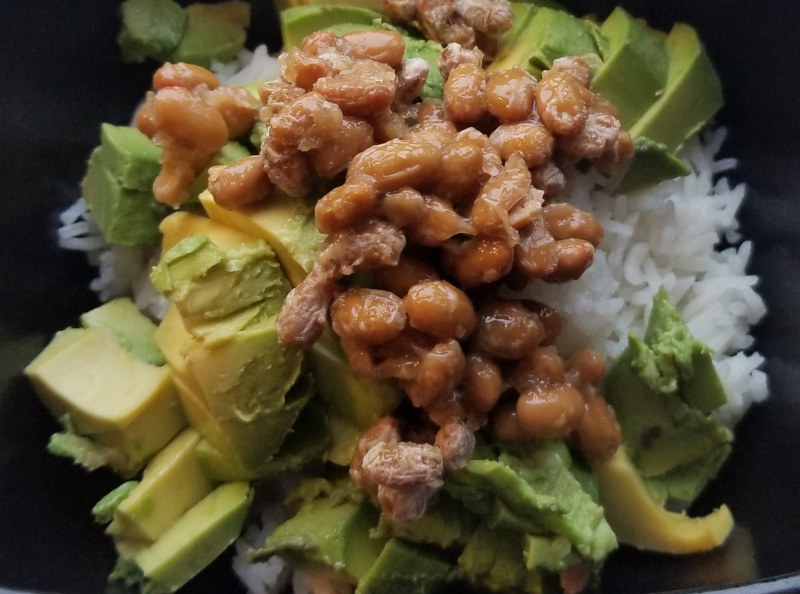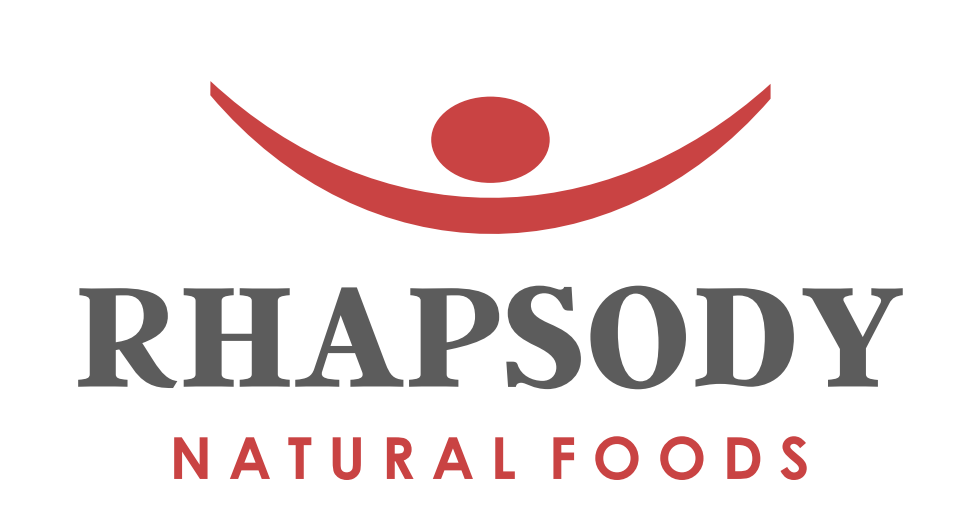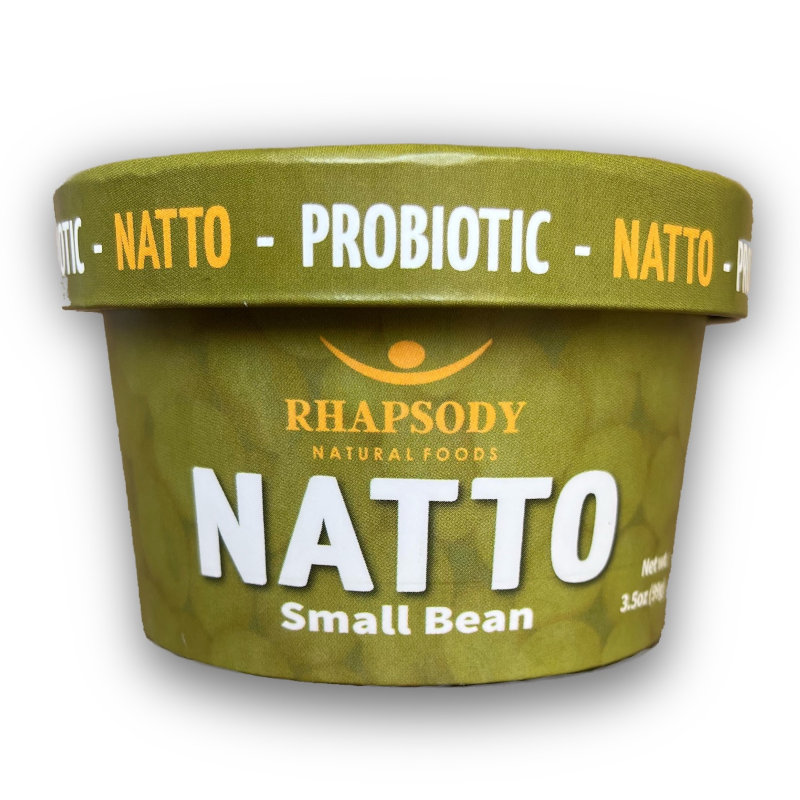
Natto
Natto is a Japanese probiotic super-food made from pressure-steamed soybeans. It is the richest food source of vitamin K2 (285 mcg per oz).
Because natto is fermented and a living food it also has the highly beneficial nattokinase probiotic enzyme. Nattokinase is key in a healthy digestive system and is known to aid in digestive disorders, especially those caused by antibiotic use. Nattokinase is essential in the proper clotting mechanisms in blood and has even been suggested to break down the plaque associated with Alzheimer’s Disease.
What is Natto?
Natto is a traditional Japanese fermented food, created by a bacterial alkaline fermentation. Even today some natto is made the old-fashion way of fermenting steamed soybeans in rice straw.
The Science
The Bacillus subtilis natto culture naturally present in rice straw is what ferments the soybeans.
Natto has a very distinct smell, texture, and complex flavor due to compounds such as acetic, propionic, valeric, capric, phenylacetic acids, diacetyl, and tetramethyl pyridine formed during its fermentation. It is ready to eat and best eaten at room temperature. Traditionally it is stirred well before eating it, to develop the stringy sticky threads it is known for.
Many relish it as a delicacy while others have learned to love it for its extraordinary health benefits. The beans used for natto are most often small soybeans. Soybeans need to be well soaked, properly cooked, and fermented to significantly reduce unwanted substances such as phytic acid, lectins, and saponins and allow a thorough breakdown through enzymatic activity to yield an easy to digest, tasty, and nutrient-rich probiotic food.

Some Highlights of Natto’s Health Benefits
High in Vitamin K2
Vitamin K2 (menaquinone or MK-7) is necessary for proper bone development and maintaining a healthy bone mineral density. It assists in calcium absorption to aid in creating and maintaining healthy bones, protecting against osteoporosis. While assisting the absorption of calcium for the bones, it also helps keep the vascular system clear of calcification. This argument was made stronger when research showed that Japanese who eat natto on a daily basis are at much lower risk for bone fractures than Western countries where vitamin K2 deficiency is more common.
A Recommended Daily Allowance of vitamin K2 has not been established, but up to 200mcg might be an adult’s daily need. You will find that in less than one ounce of natto. A study by the vitamin K research group at the University of Maastricht, in The Netherlands, found 1000 mcg per 100 grams (or about 3.5 oz) of vitamin K2 in natto.
Here’s a link to more about the benefits of natto related to vitamin K2 and nattokinase.
In short, vitamin K2 makes sure that calcium ends up in the bones and not in the vascular system which often happens to improperly absorbed calcium leading to arteriosclerosis.
Recent research studies also link vitamin K2 intake to reduced risk of certain cancers and diabetes.
Contains Nattokinase
Nattokinase is an enzyme that helps break down blood clots (a so-called fibrinolytic agent). As you get older your body’s ability to create plasmin (the natural enzyme that breaks down blood clots) diminishes, while the ability and rate of creating clots increases. Nattokinase can take the place of plasmin in breaking down these blot clots. Although it has been suggested that nattokinase can help with the prevention of Alzheimer’s and diabetes, more study needs to be done to make this better understood.
PQQ
Pyrroloquinoline Quinone or PQQ is an essential nutrient that actively promotes the formation of mitochondria, sub-units in cells that are responsible for the healthy functioning of cells. Studies have found their beneficial role in maintaining memory, cognitive health, and as a cardio and neuroprotective compound. New research has shown natto to be a uniquely high source of PQQ.
Probiotic
Natto is fermented by the Bacillus subtilis natto bacteria. This bacteria is helpful in aiding digestive disorders. It is said that in ancient Japan the Samurai’s used it daily and would even feed it to their horses to increase their speed, health, and vitality. The Bacillus subtilis natto can live out its whole life cycle in the human gut, which not all probiotic microbes are capable of. This makes natto a highly effective aid in creating a healthy environment in your digestive system.
High-Quality Vegetable Protein
Natto has 18 grams of protein available per 100g serving. It contains a broad range of amino acids and is very nearly a complete protein. When paired with rice, it supplies all the amino acids to make a complete protein. A big advantage is, that it is fermented, which means predigested and easy to absorb. In fact, 50% of the protein has been solubilized and 20% degraded to their building blocks, amino acids.
Nutrition Data
One serving of natto (about 100g/3.5oz) contains:
22% RDA Dietary Fiber
22% RDA Calcium
22% RDA Vitamin C
48% RDA Iron
6% Vitamin B6
76% Manganese
29% Magnesium
21% Potassium
20% Zinc
Go here for natto’s complete nutrition profile.

How much natto to eat?
Traditionally natto is eaten in small portions of about 1.5 ounces several times per week. Because of a general deficiency in nutrients found in natto you might find yourself attracted to eating more than that initially. Your body is basically playing catch up.
Dietary changes and the industrialization of food production have led to deficiencies unimaginable 50 years ago. Fermented foods such as natto, tempeh, miso, sauerkraut, pickles, and so on, play an important part in regaining the health we once took for granted.
Natto is usually made from a small variety of soybean. It can be made with large soybeans, resulting in a different taste and texture.
Refrigerate and consume by the date on the container, or freeze and consume within a few weeks of thawing.
Frequently Asked Questions About Natto
Can I freeze natto?
Yes! Natto can be frozen but should be sealed in plastic to prevent freezer burn.
Tip: Buy a case of natto, seal in a plastic bag and freeze what you will not consume within 4 weeks.
What is the stickiness of natto? What are the nattokinase and vitamin K2 content?
The stickiness of the natto is activated nattokinase. Nattokinase is found in the sticky stringy part (gamma polyglutamic acid) of natto. Sometimes organisms in the air will settle into the natto when it is made and inhibit or interfere with the formation of these glutamine polymers. Because of this, nattokinase contents vary per batch and can be as high as 2000 FU (Fibrinolytic Units) per 2 oz of natto. Nattokinase intake, for healthy persons, can be as low as 400 FU per day, which would be one teaspoon of natto. Glutamic acid is formed when stirring the natto well and brings out the umami flavor.
On vitamin K2: It has been reported that about one tablespoon (roughly 2 oz) of natto contains about 500 mcg of vitamin K2. The range of 10 to 100 mcg of K2 is considered enough as a daily intake.
In reality, natto’s K2 and nattokinase contents vary from batch to batch and from manufacturer to manufacturer. A steady consumption of one teaspoon to one tablespoon of natto per day should be sufficient for a healthy person to supply these nutrients. Of course, your body is the best guide and it will tell you how much natto to eat, as need ebbs and flows with your condition and activity, taking into account not just K2 and nattokinase content but all other nutrients and compounds as well.
What about natto shelf life and shipping?
Natto is a probiotic and needs to be refrigerated to slow the fermentation process. When transit times are beyond 24 hours we ship it with ice packs to keep it cool as long as possible. Natto is a living food that ripens with age and gets stronger in flavor and does not spoil easily.
Some background: Natto contains an alive (active) culture that likes 95-110 degrees F to propagate and ferment (break down) the soybeans. When the temperature drops the culture’s activity slows down, even to the point that it virtually becomes dormant. However, it will come back alive when exposed to temperatures above 70°F.
Natto bacteria grow a white mold that covers the beans and breaks down the protein into amino acids creating a particular odor in the process. When these amino acids further break down ammonia develops.
Although the ammonia smell is the first sign of advanced fermentation there are natto fans who actually appreciate this from a culinary point of view. Some of the ammonia can be neutralized by adding a little vinegar. Signs of actual spoilage on natto are spots of green, black, yellow, or red mold at which point it should be composted.
Refrigerate natto upon receipt or freeze to keep it beyond its “Sell-by” date for many more months. Consume soon after thawing.


